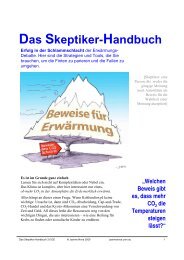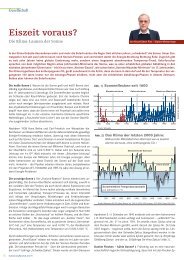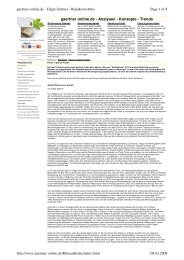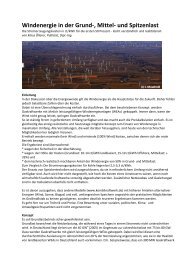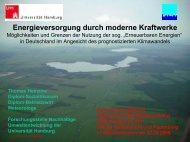SPINNING THE CLIMATE Vincent Gray - KlimaNotizen
SPINNING THE CLIMATE Vincent Gray - KlimaNotizen
SPINNING THE CLIMATE Vincent Gray - KlimaNotizen
Create successful ePaper yourself
Turn your PDF publications into a flip-book with our unique Google optimized e-Paper software.
The "Observations" have been moved up to number 3, and they no longer claim that they are only<br />
interested in their greenhouse properties. However, Chapter 1"The Climate System” and Chapter 2.<br />
“Radiative Forcing” are still there to sell the greenhouse effect first.<br />
I could claim a major improvement. The first draft of the 1995 Report had a Chapter 5 "Validation of<br />
Climate Models" as in the First Report. I pointed out that it was wrong since no climate model has ever<br />
been "validated", and they did not even try to do so. They thereupon changed the word "Validation" to<br />
"Evaluation" no less that fifty times and have used it exclusively ever since.<br />
Perhaps I should explain what is meant by "validation". It is a term used by computer engineers to<br />
describe the rigorous testing process that is necessary before a computer-based model can be put to use. It<br />
must include successful prediction over the entire range of circumstances for which it is required. Without<br />
this process it is impossible to find out whether the model is suitable for use or what levels of accuracy<br />
can be expected from it.<br />
The IPCC has never attempted this process, and they do not even discuss ways in which it may be carried<br />
out. As a result the models are worthless, and their possible inaccuracy is completely unknown. The<br />
IPCC has developed an elaborate procedure for covering up this deficiency which is well described in the<br />
IPCC document on "Guidance Notes for Lead Authors on Addressing “Uncertainties". .It includes<br />
attempts to "simulate" those past climate sequences where suitable adjustment of the uncertain parameters<br />
and equations in their models can be made to give an approximate “fit”, but they rely largely on the<br />
elaborate procedure for mobilizing the opinions of those who originate the models. Most of them depend<br />
financially on acceptance of the models, so their opinions are handicapped by their conflict of interest..<br />
The outcomes of the models are classified in the following levels of confidence;<br />
Very High Confidence. At least 9 out of 10 chance of being correct<br />
High Confidence. About 8 out of 10 chance<br />
Medium Confidence About 5 out of 10 chance<br />
Low Confidence. About 2 out of 10 chance<br />
Very Low Confidence. Less than 1 out of 10 chance.<br />
These figures do not possess statistical significance as they are pure guesswork. As might be expected<br />
Low Confidence and Very Low Confidence are extremely rare.<br />
In addition there are levels of Likelihood of the value of their “projections”, which take the place of<br />
“predictions”.<br />
Virtually Certain: >99% probability of occurrence<br />
Very Likely: >90% probability<br />
Likely: > 66% probability<br />
About as Likely as not:33 to 66% probability<br />
Unlikely:



